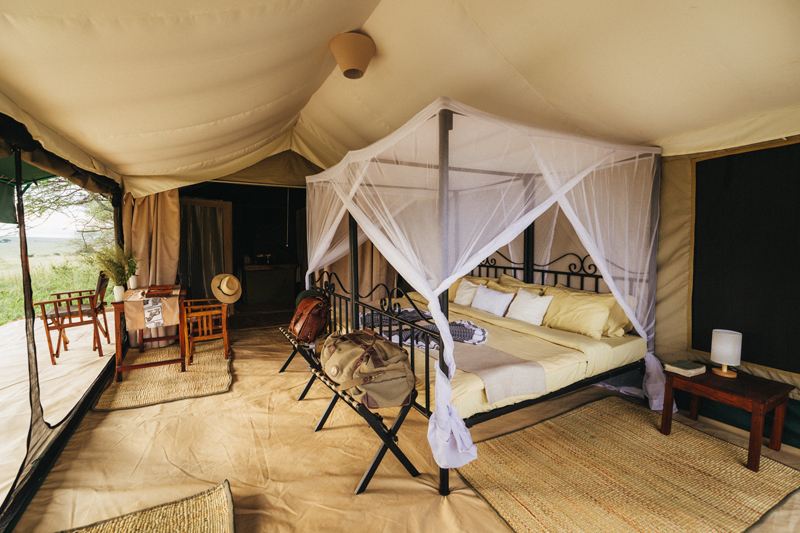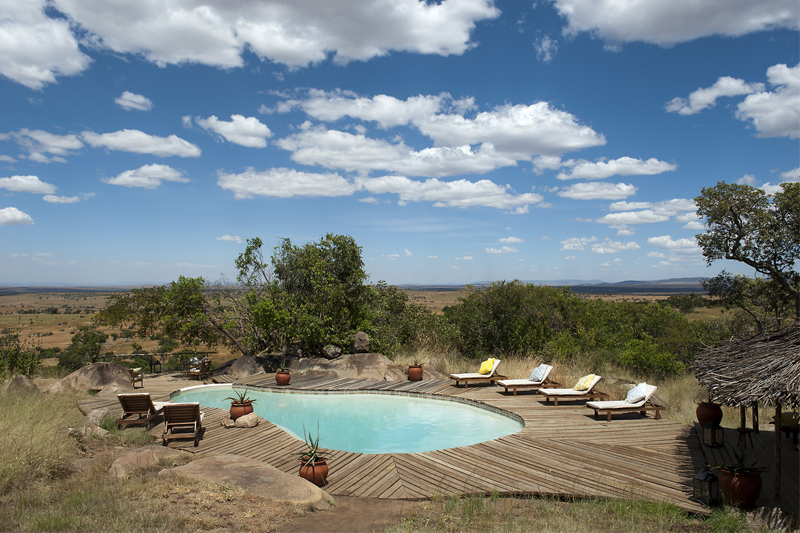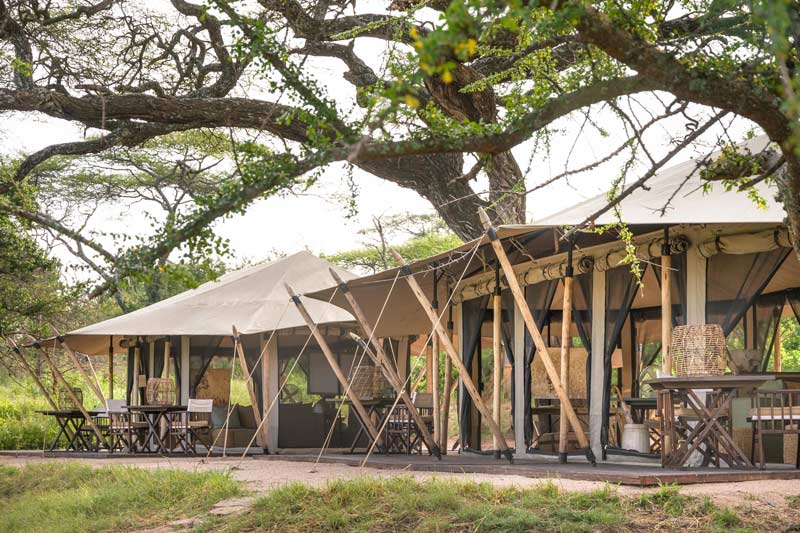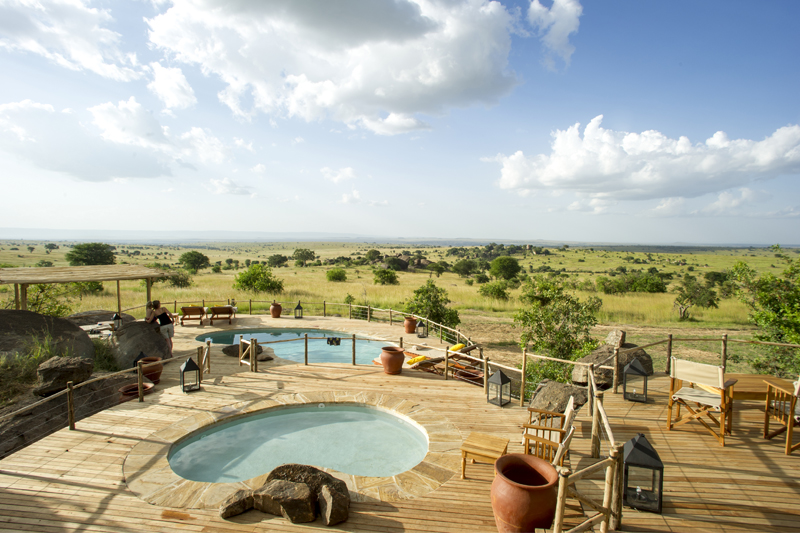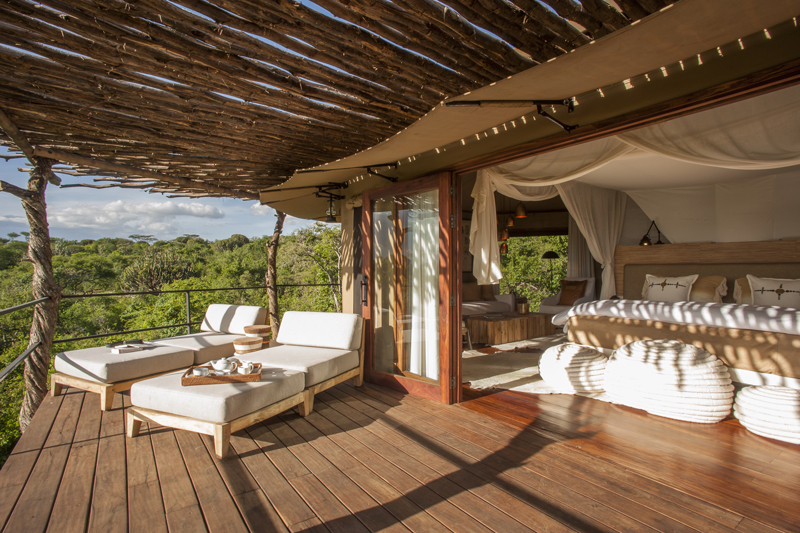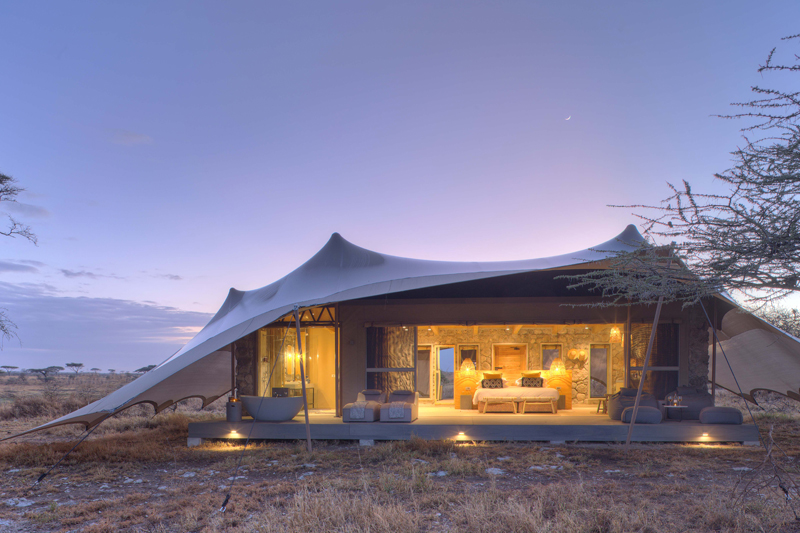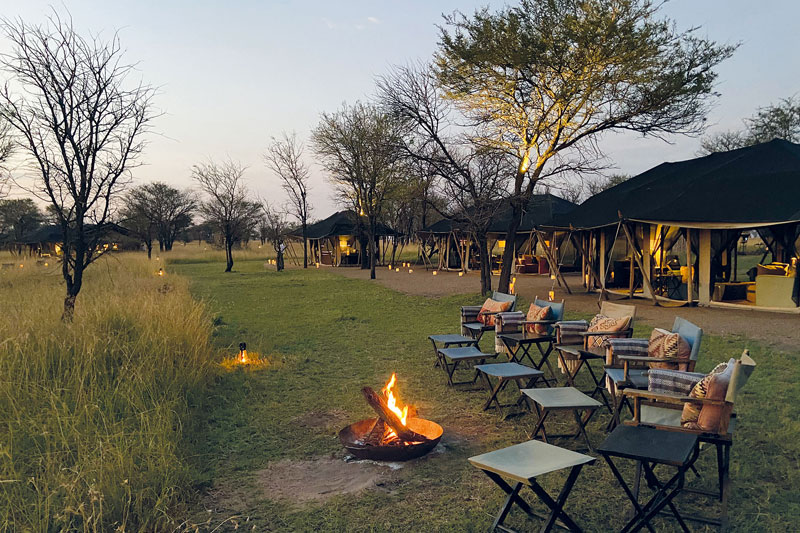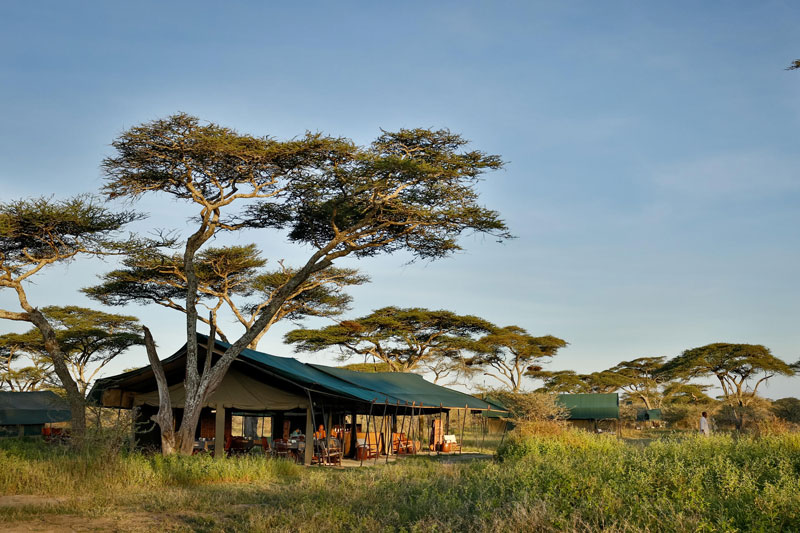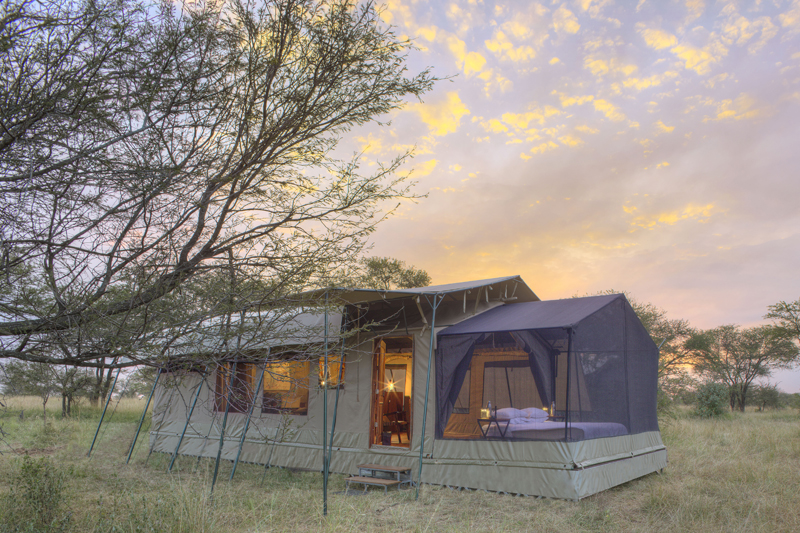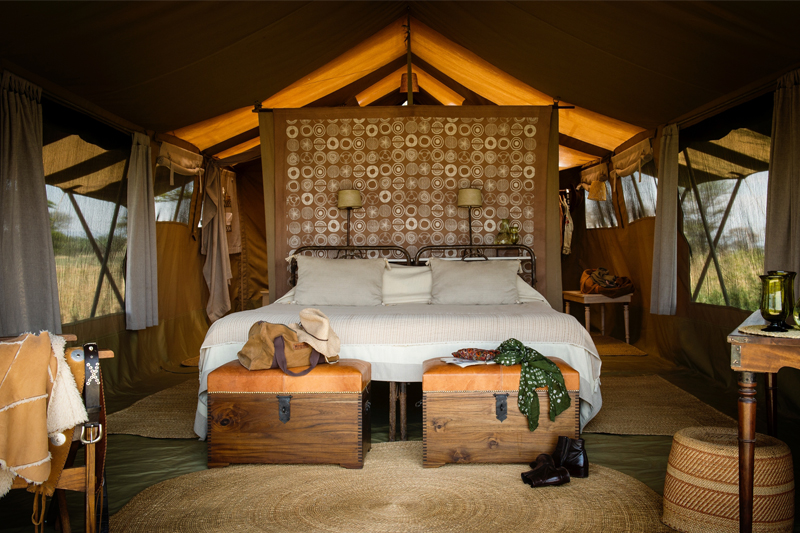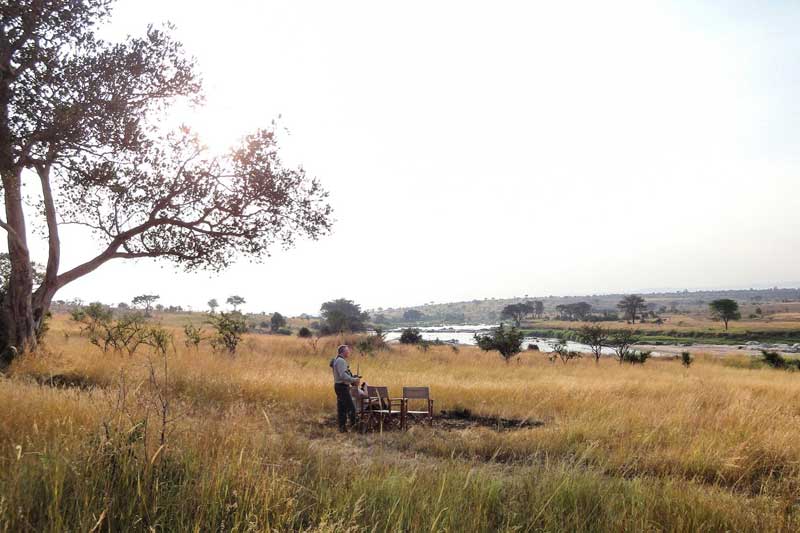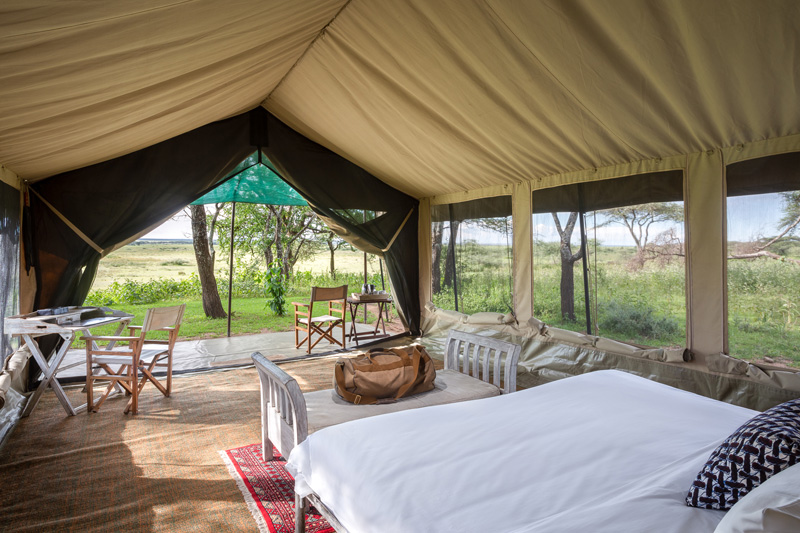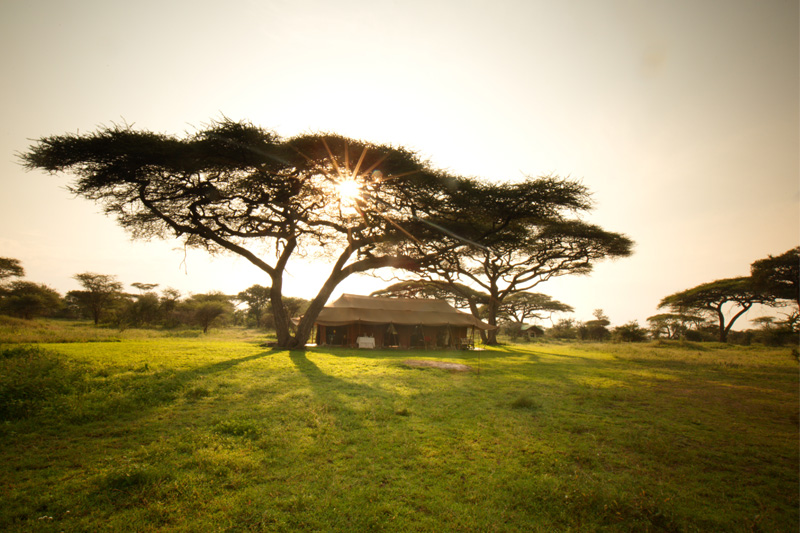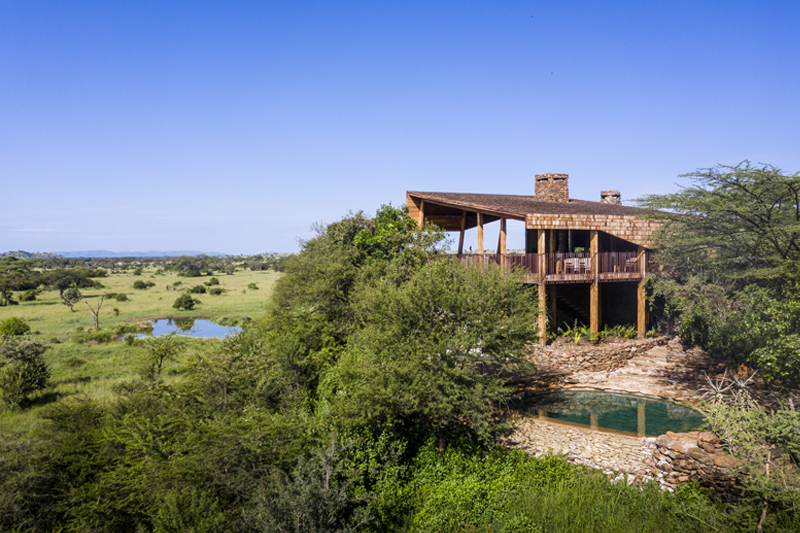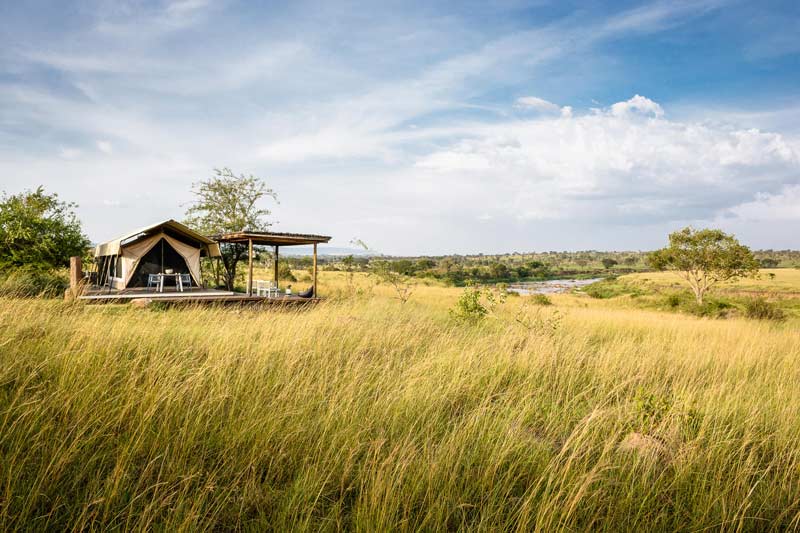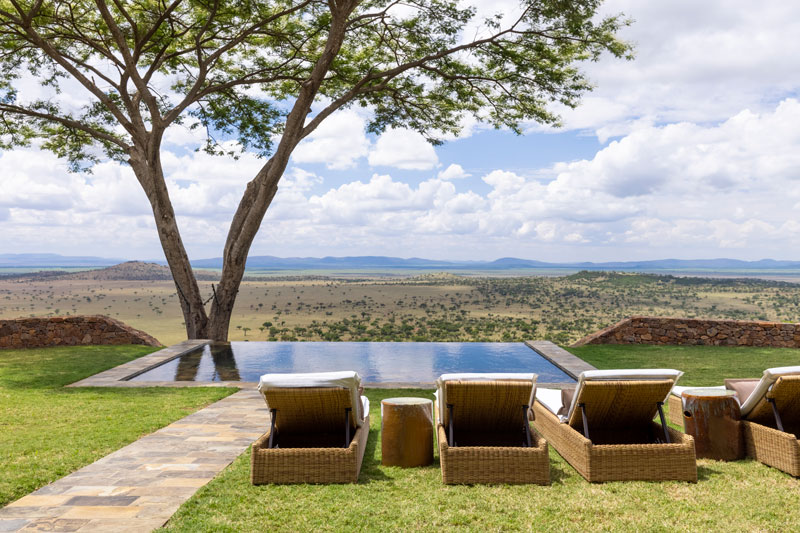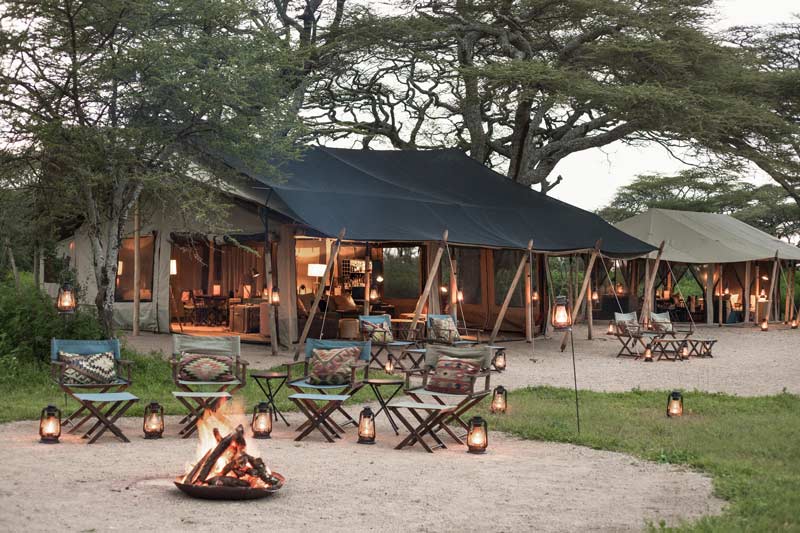Serengeti National Park
With an area of some 14,000 sq. km, Serengeti is one of the best-known wildlife sanctuaries in the world.
Lying in north-west of the country between the Ngorongoro highlands and Lake Victoria, the Serengeti ecosystem includes the National Park itself, the Ngorongoro Conservation Area, Maswa Game Reserve, Loliondo Game Controlled Area, and Kenya’s Masai Mara National Reserve, together forming one of the most complex and least disturbed ecosystems on earth. This is the home to the famous wildebeest migration, the movement of some 2 million wildebeest, 500,000 Thompson gazelles and 250,000 zebra.
The landscape was originally formed by volcanic activity in the Ngorongoro highlands and it varies from the open short grass plains in the south, to savannah and scattered acacia woodlands in the centre, to extensive woodland and black clay plains in the west and hilly wooded grassland in the north. Most of the permanent water is found towards the northern and western areas, the lack of permanent water and food in the south being the main reason for the annual migration.
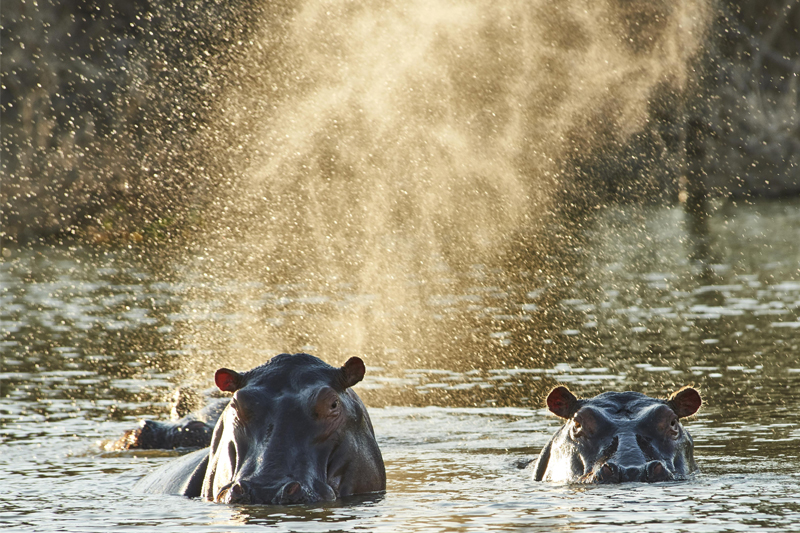
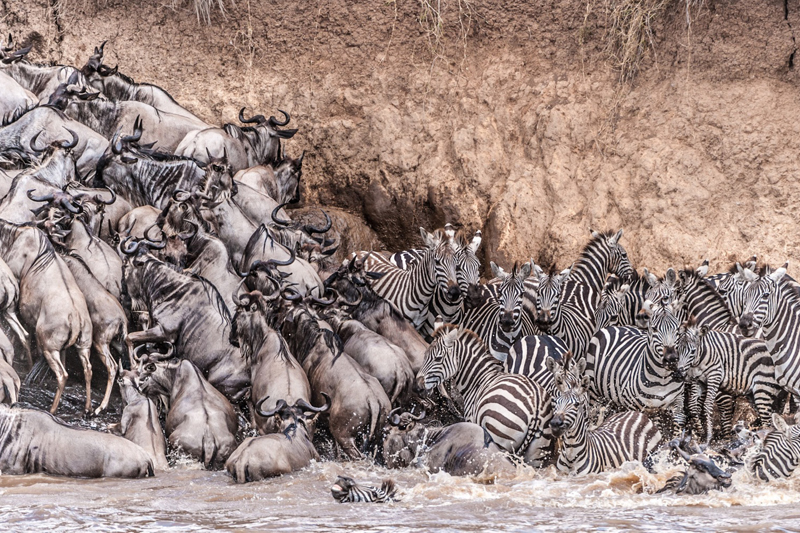
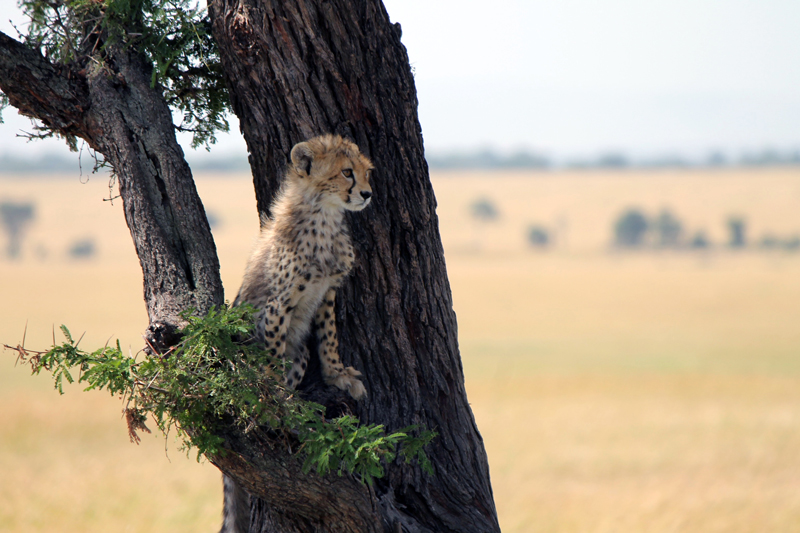
The hundreds of thousands of wildebeest and zebra congregate on the southern short grass plains around Ndutu during the intermittent rainy months from late November to March/April, calving around the end of January when the nutritious grass is at its best. The rut follows. Depending on grass/water supply, the start of the Serengeti annual migration begins at the end of this period, and the herds begin to march north/westwards, ‘lowing’ incessantly so that the air hums like a dynamo (zebra first, then the wildebeest and gazelles). Lion, cheetah and hyaena watch on with interest, ensuring that only the fittest survive, while jackals trail behind and vultures circle overhead. The herds initially head west to reach the Grumeti River from late May onwards, before continuing further north to the Mara River region (a large proportion of the herds crossing the border into Kenya’s Masai Mara). They remain in the northern Serengeti and Masai Mara during the dry season (July to October) where they have access to the permanent waters of the Mara River, and it is during this time that the most dramatic ‘river crossings’ take place over the Mara River.
Around October/November, as the rain clouds gather, the herds head south once more to calve on those nutritious short grass plains before starting the cycle again. The wildlife in the Serengeti safari region is thriving, but it is a delicate ecosystem, easily affected by drought, overgrazing and disease. More than 30 species of herbivores are found here, plus nearly 500 species of birds. Other animals likely to be seen include giraffe, elephant, buffalo, impala, hippo, and leopard, aside from the aforementioned predators. Wild dogs and black rhino can be seen in certain areas, if you are lucky!
Most of the Serengeti is subject to National Park restrictions – no off road driving, night drives or walking. There are very limited places where these rules have been relaxed, and in particular there is a wilderness area within the central section of the park which is set aside for fully supported walking trails.
The Loliondo Game Controlled Area is a vast wilderness area bordering the eastern edge of the Serengeti National Park and the northern boundary of the Ngorongoro Conservation Area. The region is home to traditional Maasai who move nomadically according to the seasons. Outside the south-west of the park is Maswa Game Reserve, traditionally a hunting area but which is now largely used for photographic safaris, in conjunction with the much smaller and very exclusive Mwiba Wildlife Reserve.
To the south-east, the short grass plains merge into the Ngorongoro Conservation Area, which is also home to Olduvai Gorge. This region is fantastic during migration season from December to April, but becomes very dry from July to October. Masai villages are found throughout the NCA (and into the highlands), and off-road driving and walking is permitted. Some of the scenery is spectacular, especially around the Gol Mountains in the north-east of the region, where remote cultural experiences can also be enjoyed.
Although there is no doubting the spectacular scenery and wildlife of the Serengeti, it is important to travel to the correct areas of the region at the right time of year. If you want to see the migration herds, then you need to give yourself the best chance, which means from December to April in the southern Serengeti, May to early July in the central and western areas, and from mid July to early November the north of the park. From mid-November to mid-December, perhaps the least predictable part of the migration, the central Serengeti makes most sense.
We’ll always take the migration into account when designing your itinerary, though the migration is, by its nature, very unpredictable and each year a different schedule is followed, depending on the timings and locality of rainfall. However, it is also worth mentioning that a Serengeti safari does not have to be entirely based around only the migration. Even without the great herds, certain regions (mainly central, western and northern) offer excellent game viewing all year round, and can offer a much more exclusive game viewing experience outside of the migration period.
For further information on Serengeti safari options please call us on +44 (0) 1787 888590 and speak to one of our specialists, or email us via our Contact Us page.


